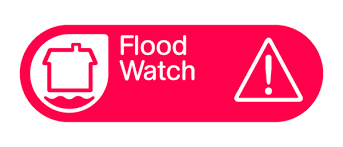Overview
Large river systems and smaller rivers and streams often flood as a result of heavy rains and snowmelt. Land is submerged as the water level rises above its normal value and overflows its banks, so that water is over land that is usually dry.
The 100-Year Flood
Many streams flood regularly, but the water reaches a higher level some years than in other years. For example, the Skagit River in Washington State has reached flood stage over 60 times in the last 100 years, but the river does not flood at the same level every time. Most of the time, only low-lying pasture land or roads are flooded with standing water. The most extensive floods are called 100-year floods, but that doesn’t mean they occur every hundred years, only that each flood has a probability of 1 in 100 of reaching the highest level in the cycle. Most of the time, levee systems are not adequate to protect property against a 100-year flood, and the area must be evacuated.
Flood Plains
Areas that are close to rivers and streams are desirable places to live for plants, animals, and people. Plants and animals grow rapidly in a habitat with enough water, and rivers deposit sediment to make the soil fertile. People settle in the rich agricultural land to grow crops, and the rivers provide a natural means of transportation. Flood plains are areas of land on either side of the banks of a river or stream that can absorb flood water if the river overflows its banks. The river or stream deposits sediment as it travels through the land.
Flood Watches and Warnings
A river reaches flood stage when its height is at or above the level of the riverbank. The measurement of flood stage is specific to the particular river or stream, as the riverbank may be at different heights at different points along the river. The National Weather Service issues a flood watch as the first level, stating that conditions may occur for a potential flood. A flood warning is the second level of alert if a particular river is approaching flood stage, but a flood warning is not a guarantee of disaster. For example, the precipitation rate may slow, so that the river does not rise as quickly. If the river does not rise to flood stage, or when it starts receding, the flood watch or warning is often cancelled in that area.
Flood Control
In many flood-prone areas, artificial levees are built along either side of a river to raise its banks and contain the river as it rises. These artificial levees may be built of earth, rocks, or concrete. Sandbags may also be used to extend the height of the wall and prevent damage from the rising river. Water can be diverted into dams and reservoirs.
Interested in science tutoring services? Learn more about how we are assisting thousands of students each academic year.
SchoolTutoring Academy is the premier educational services company for K-12 and college students. We offer tutoring programs for students in K-12, AP classes, and college. To learn more about how we help parents and students in Mount Vernon, WA: visit Tutoring in Mount Vernon, WA




